National Museum of Nature and Science
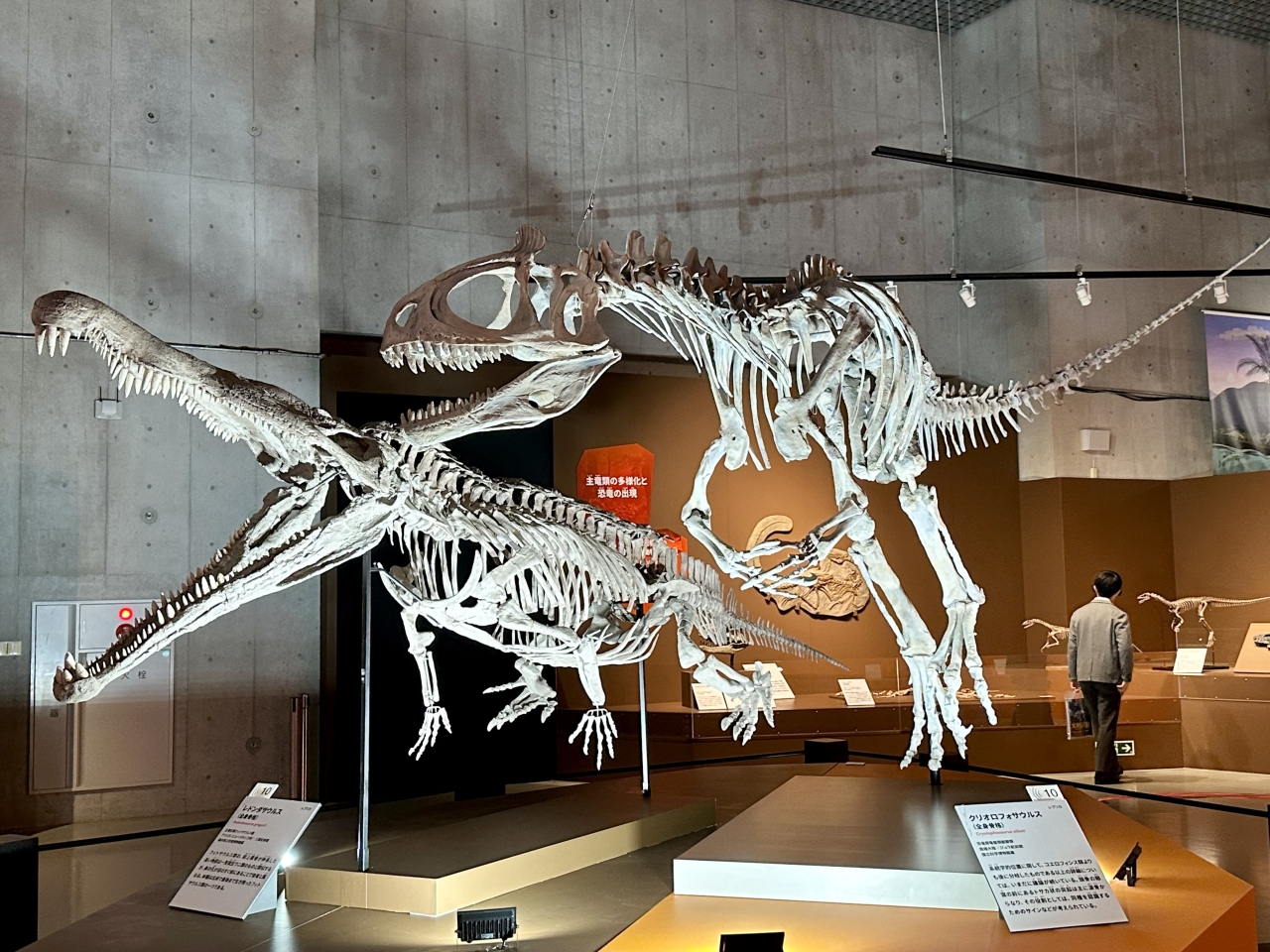
The National Museum of Nature and Science is currently hosting a special exhibition titled “The Great Extinctions: The Big Five in the History of Life,” which focuses on the five “mass extinctions” that have occurred over the Earth’s 4 billion year history, commonly known as the Big Five. The exhibition will run from November 1, 2025 (Saturday) to February 23, 2026 (Monday, national holiday).

In the history of life, “extinction” and “evolution” go hand in hand. Extinction occurs when a species dies out without leaving any offspring, and it is generally thought that around 10% of species become extinct every million years. On the other hand, a mass extinction is when species from different taxonomic groups become extinct all at once in a geologically extremely short period of time.
At one point, around 90% of species were wiped out, causing a massive impact on ecosystems. This may give a negative impression of the phenomenon of mass extinction. However, while the asteroid impact around 66 million years ago brought an end to the “age of dinosaurs,” mammals took over the terrestrial ecosystem, leaving a void, and the subsequent diverse evolutionary process led to the birth of humans. In this way, the thriving of new taxa in place of extinct taxa has been repeated throughout the history of life. In other words, mass extinctions are major turning points in the history of life, and can also be seen as a driving force behind the evolution and diversification of life.
The special exhibition “The Great Extinctions – The Big Five in the History of Life” focuses on the five major mass extinction events , commonly known as the Big Five, that significantly influenced the history of life. It explores the causes of each extinction and the biodiversity before and after the extinctions, using evidence based on the latest research.

After the introduction, visitors are greeted by the spherical video exhibit “The Great Extinction Sphere,” which displays digest images of the Big Five.
With this Great Extinction Sphere at the center, there are six areas arranged radially, including an area that explains the Big Five episode by episode, and an area that touches on the world of the Cenozoic Era that followed. Every time you finish looking at one area, you return to the Great Extinction Sphere, which is a somewhat unusual exhibition structure for a special exhibition at the National Museum of Nature and Science, and the key point is that it is easy to move between each area.
The exhibit contents are as follows:
Episode 1: “OS Boundary: Diversification of the Marine Environment”
Episode 2 “FF Boundary: The Development of the Terrestrial Ecosystem”
Episode 3: “PT Border: The Greatest Extinction in History”
Episode 4: “TJ Boundary: A Great Transformation to the Age of Dinosaurs”
Episode 5: The K-Pg Boundary: The End of the Mesozoic Era
Episode 6: “Biodiversity in the Cenozoic Era: The Post-Big Five World”
“XX boundary” is a term used to divide geological time periods; for example, the “OS boundary” represents the boundary between the Ordovician and Silurian periods, approximately 444 million years ago, when the first mass extinction occurred.

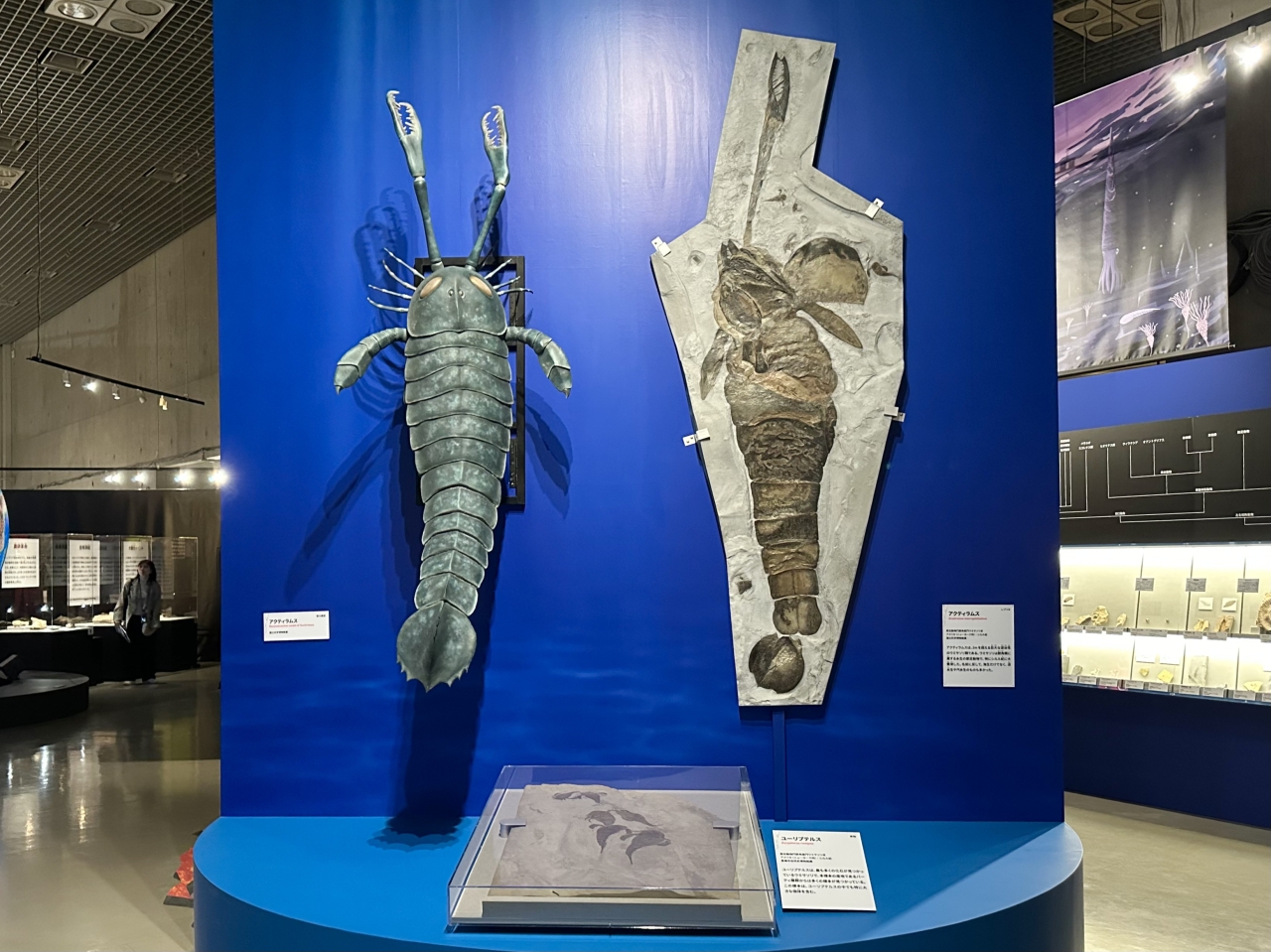

In preparation for this exhibition, the museum has also conducted research in Morocco, which has a strong connection to the Big Five, including the Fezouata Fossil Site, which offers a glimpse into the world before the mass extinction at the end of the Ordovician period, as well as collecting specimens of trilobites and other creatures, and investigating volcanic activity related to the mass extinction at the end of the Triassic period, and the results of these surveys are being shown to the world for the first time. One of the results of this research is the fossil specimen of the giant armored fish, the placoderm Dunkleosteus, which appears in Episode 2.

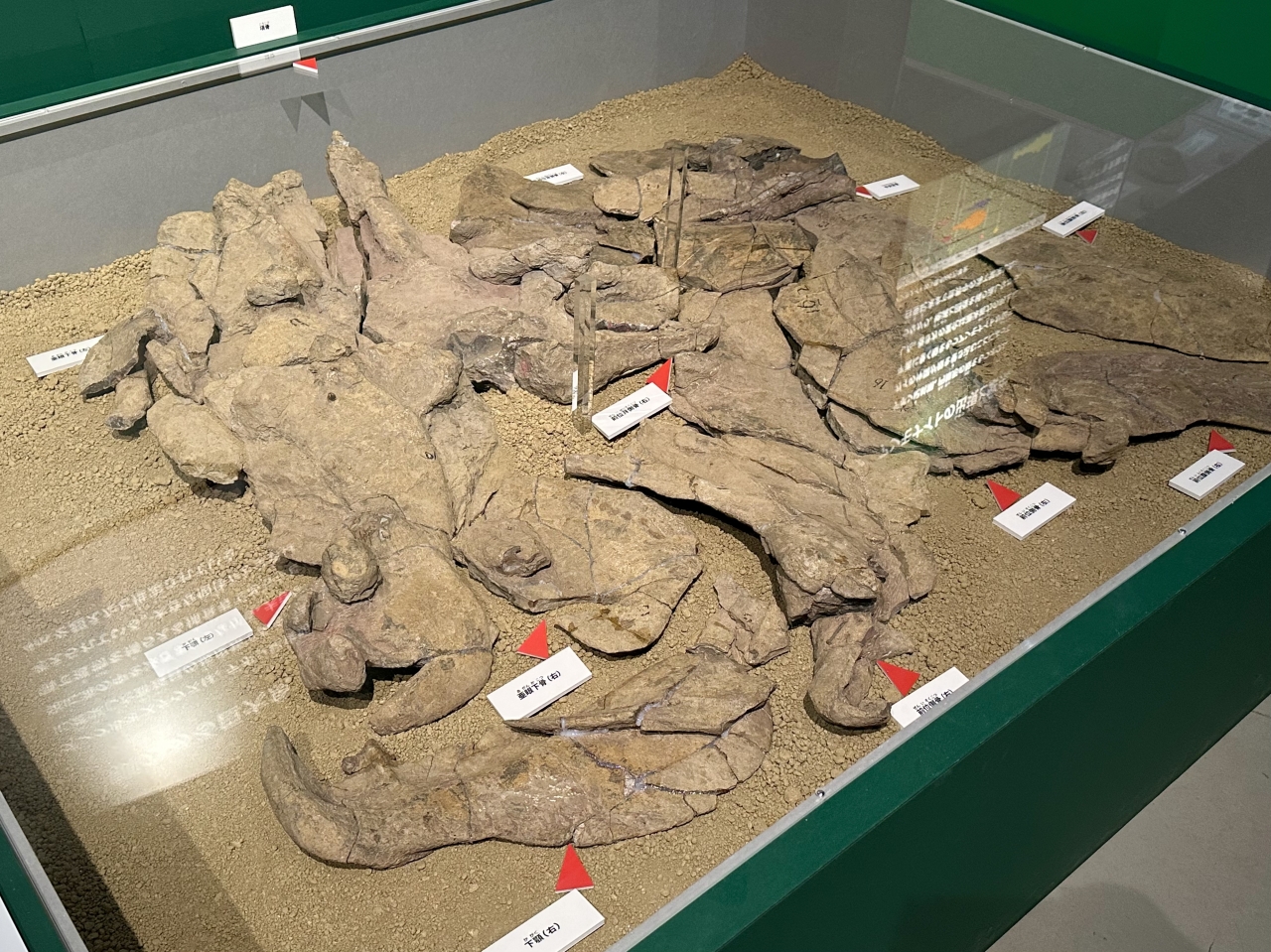
The mass extinction that occurred in stages at the FF boundary (corresponding to the Late Devonian period) between approximately 380 million and 360 million years ago is believed to have been caused by the combined impact of sudden cooling caused by volcanic eruptions and ocean acidification. Although it was the smallest in scale among the Big Five, marine organisms suffered the greatest damage, with 18-41% of genera and 42-69% of species becoming extinct. There was also a major collapse of coral reefs, and nearly 100% of jawless fish species disappeared.
Dunkleosteus was a large placoderm with a body length of over 4 meters and a skull with powerful jaws. It dominated the oceans of the Late Devonian period, but it seems that placoderms also did not survive into the Calcareous period.

On the other hand, on land, plants that had no roots or leaves underwent rapid evolution in their body structures throughout the Devonian period, and from the middle of the Devonian onwards, several taxonomic groups appeared that developed thick trunks and became trees. Of these , the world’s oldest known tree is the primitive fern, Wattiersa , discovered in New York State, USA (a replica is on display in this exhibition). Early gymnosperms and microphyllous plants also appeared, and the first forests in history were formed in the late Devonian period.
It has also been pointed out that the massive carbon dioxide consumption caused by the emergence of these forests may have contributed to the cooling of the climate and contributed to the mass extinction of marine life.

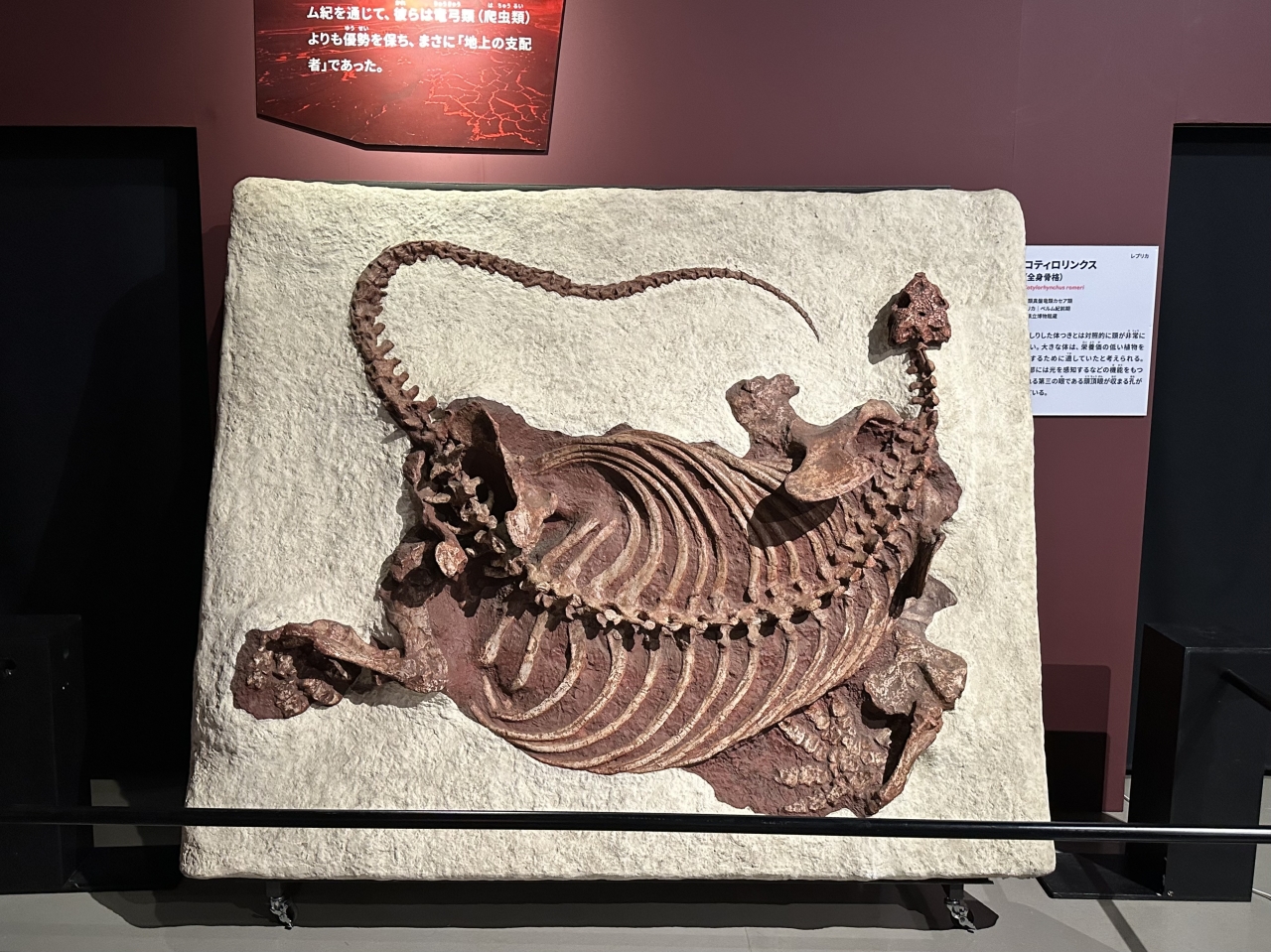
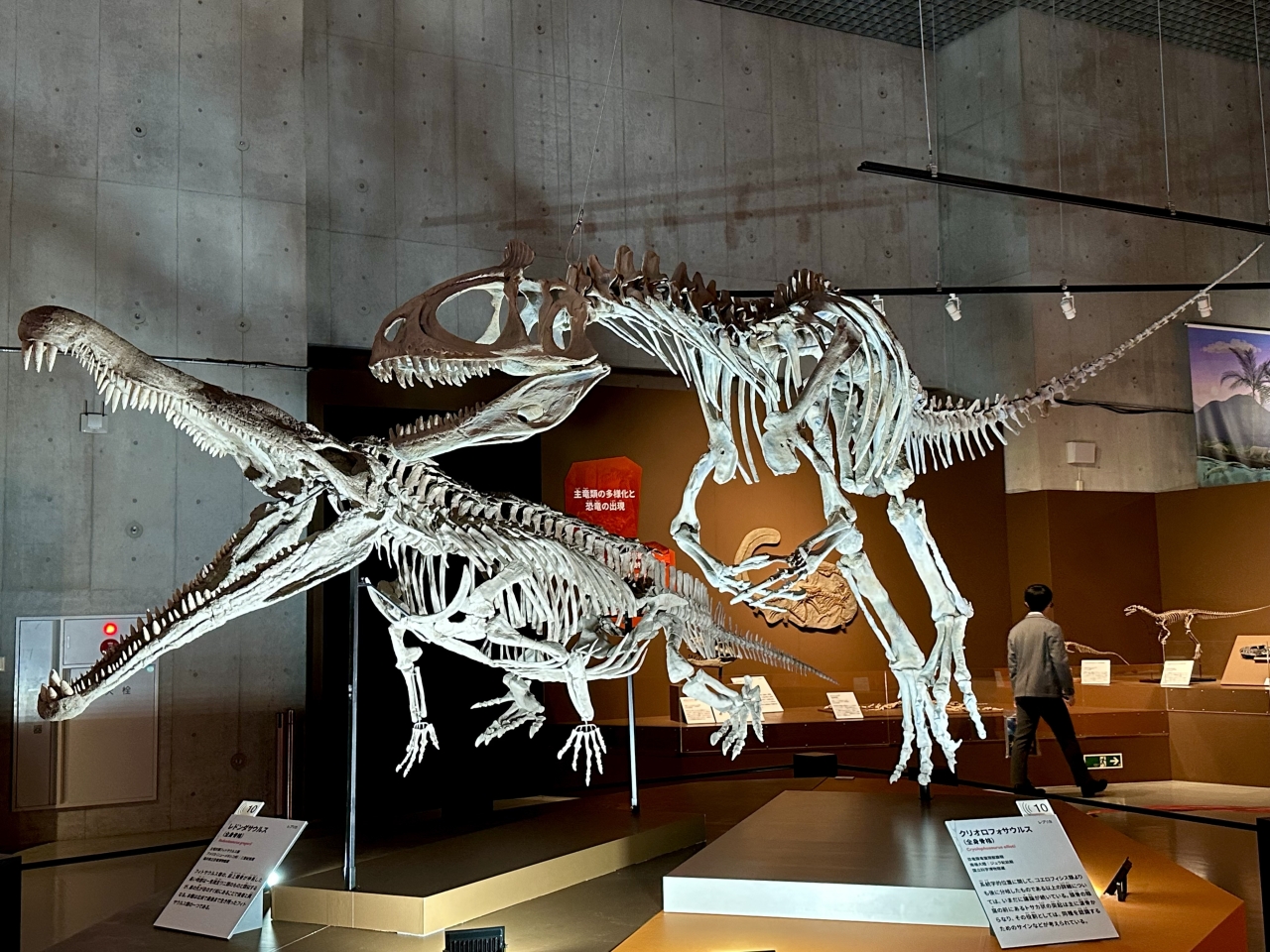
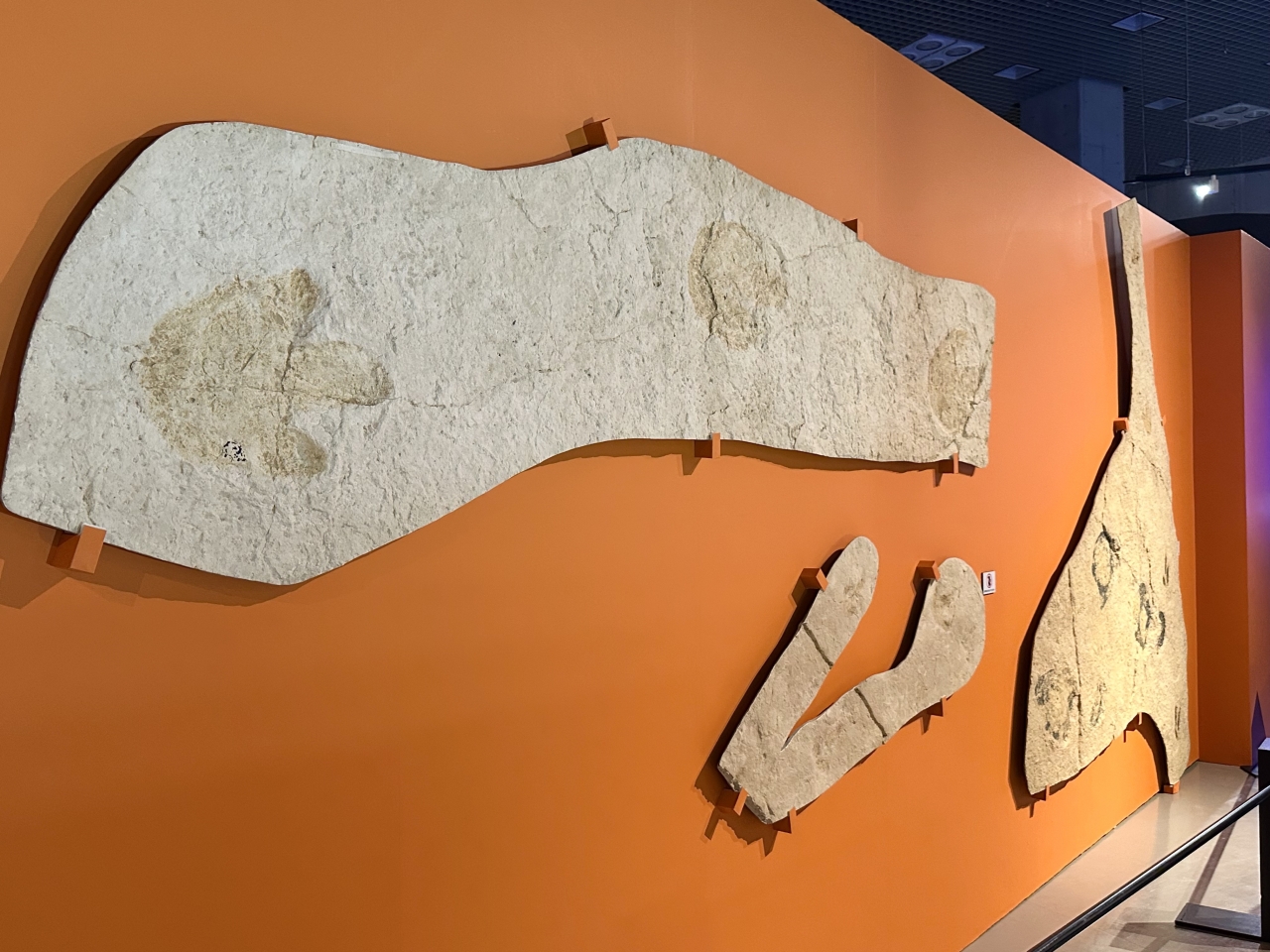
Episode 5, “The K-Pg Boundary: The End of the Mesozoic Era,” explains the fifth mass extinction that occurred at the end of the Cretaceous period, approximately 66 million years ago, triggered by the impact of an asteroid approximately 10 km in diameter that fell near the Yucatan Peninsula in Mexico.
The impact energy of the fire generated a large amount of sulfur-containing vapor, which reacted with water vapor to form sulfate aerosols. Together with the soot from the forest fires, these blocked sunlight for years to decades. This not only stopped photosynthesis in plants, which are the foundation of the food chain, but also caused acid rain, which dealt a major blow to living organisms.
The venue displays a CM2-type carbonaceous chondrite meteorite that is believed to be of the same type as the asteroid, which fell in the Murchison region of Australia in 1969, as well as specimens of the geological strata formed by the earthquake and giant tsunami that occurred when the asteroid collided.
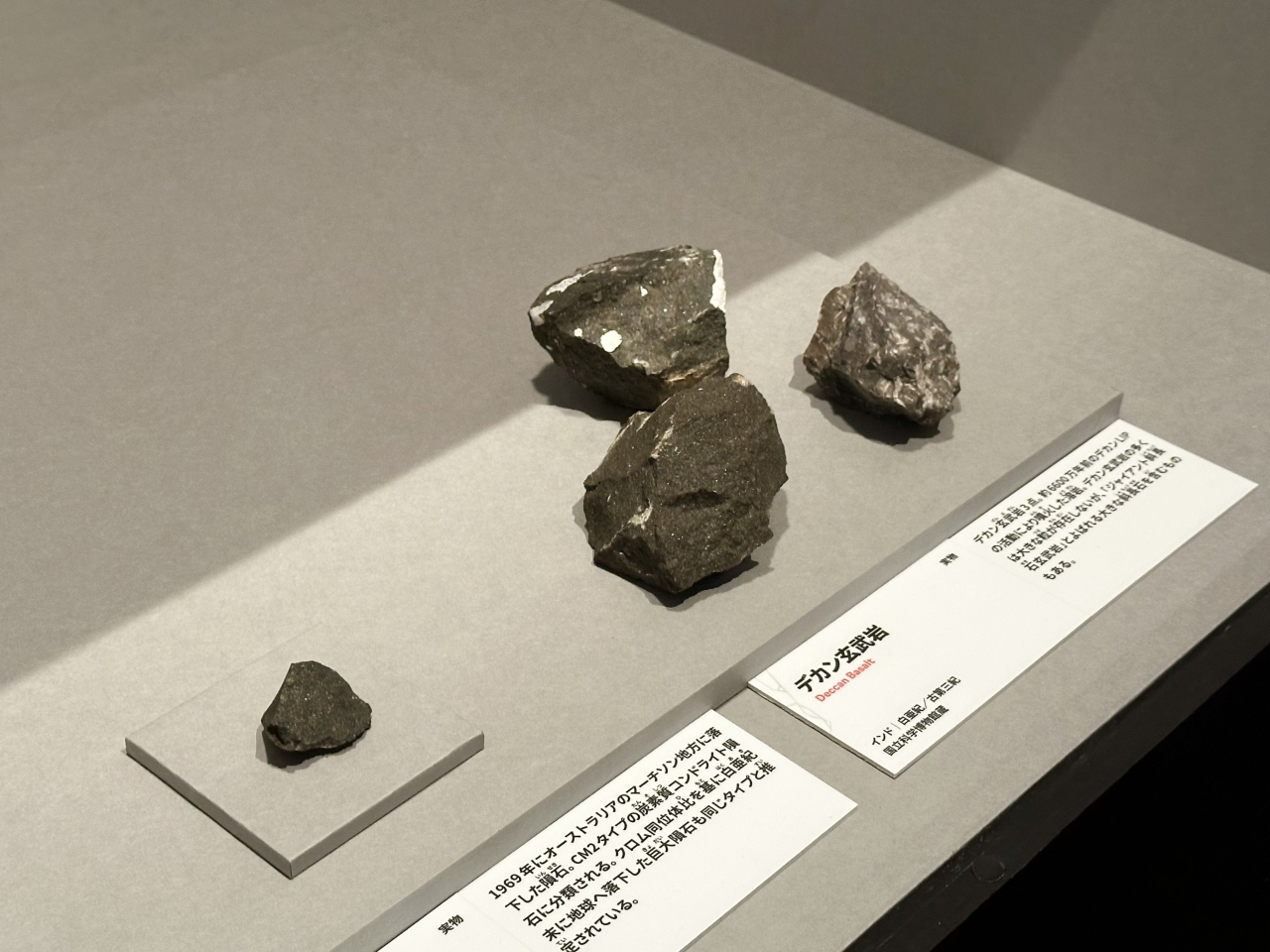
In addition, the section that focuses on Mesozoic mammals that survived the fifth mass extinction and the recovery of forests features a number of valuable fossil specimens that have been brought to Japan from the Denver Museum of Nature and Science in the United States, which boasts one of the world’s leading collections of vertebrate and plant fossils.
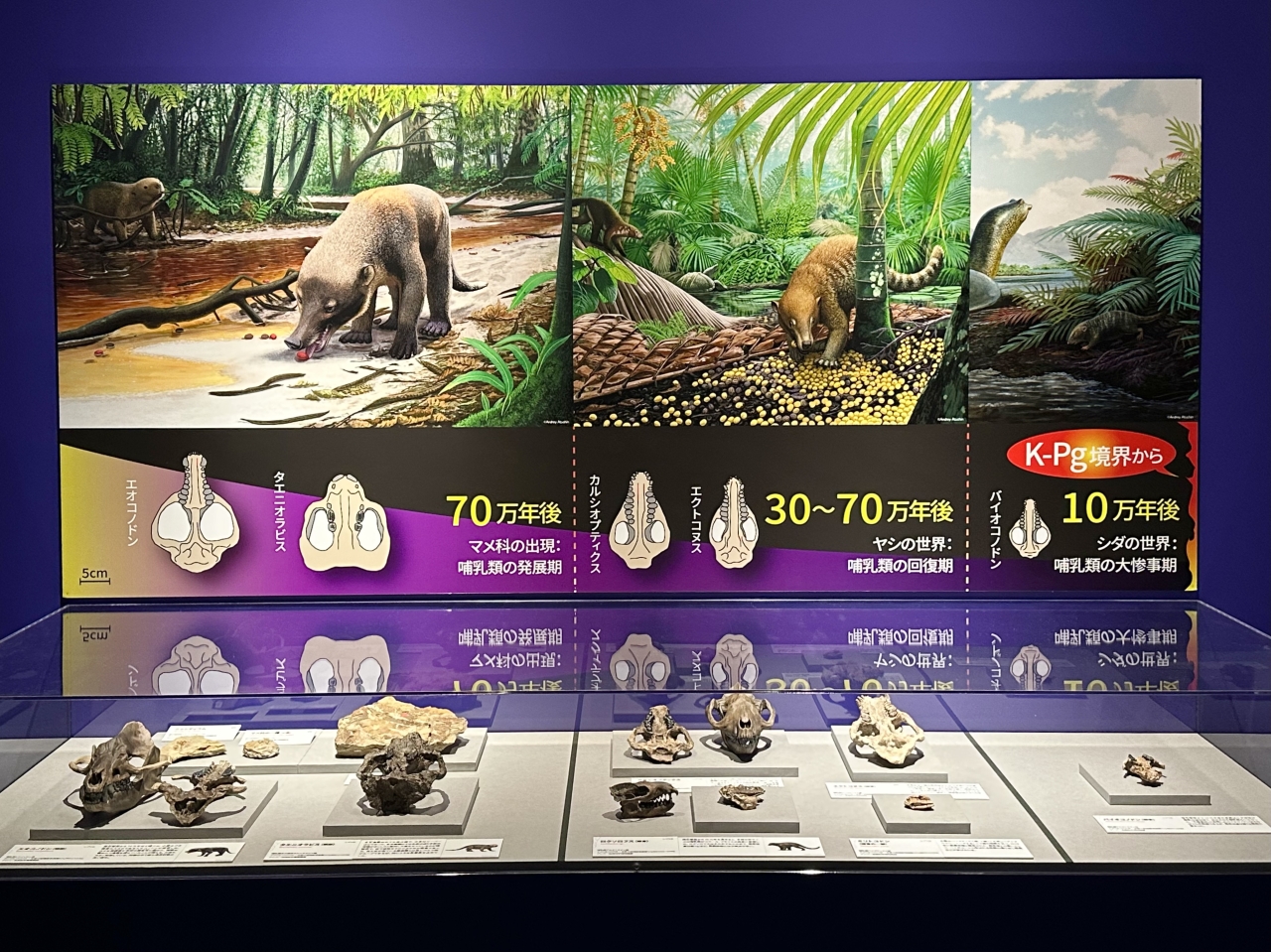
Speaking of rare specimens, Episode 6, “Biodiversity in the Cenozoic Era: The World After the Big Five,” features the world’s first public unveiling of a complete skeletal fossil of Steller’s sea cow, discovered in Tokyo’s Tama River. Steller’s sea cows are large, algae-eating mammals that lived in the North Pacific Ocean, and the fossil on display, measuring approximately 6 meters in length, is the oldest in the world. The last known sighting of this species was in 1768, and some believe that human activity may have hastened its extinction.
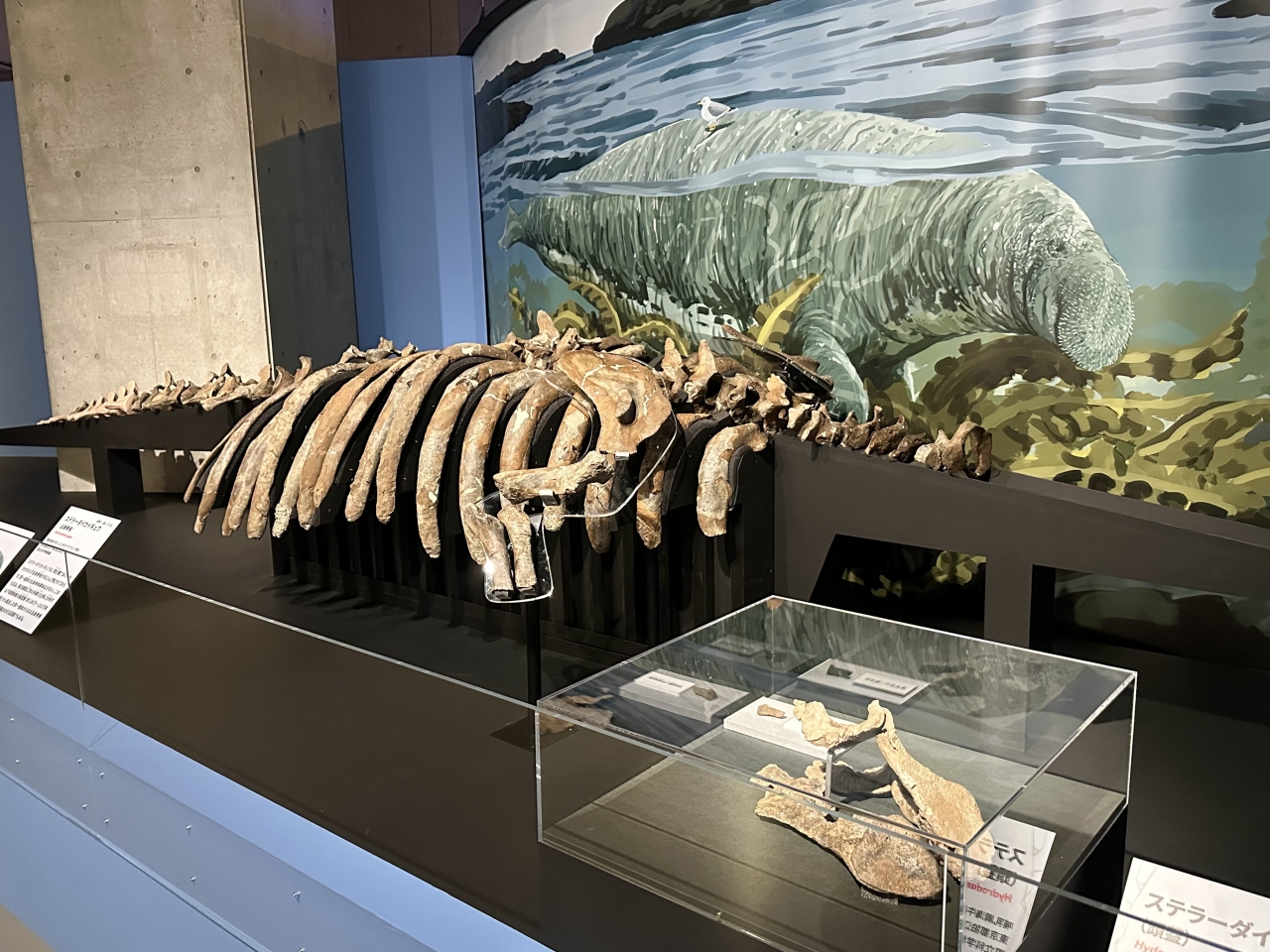
In recent years, environmental changes and loss of biodiversity thought to be caused by human activity have become a hot topic around the world, with some describing the current situation as the “sixth mass extinction period.” Visitors to this exhibition will understand the importance of using the knowledge gained from natural science research, such as that reviewed here, to predict what the extinctions and climate change currently occurring may bring about in the future, and to use this knowledge to develop preparations and countermeasures.
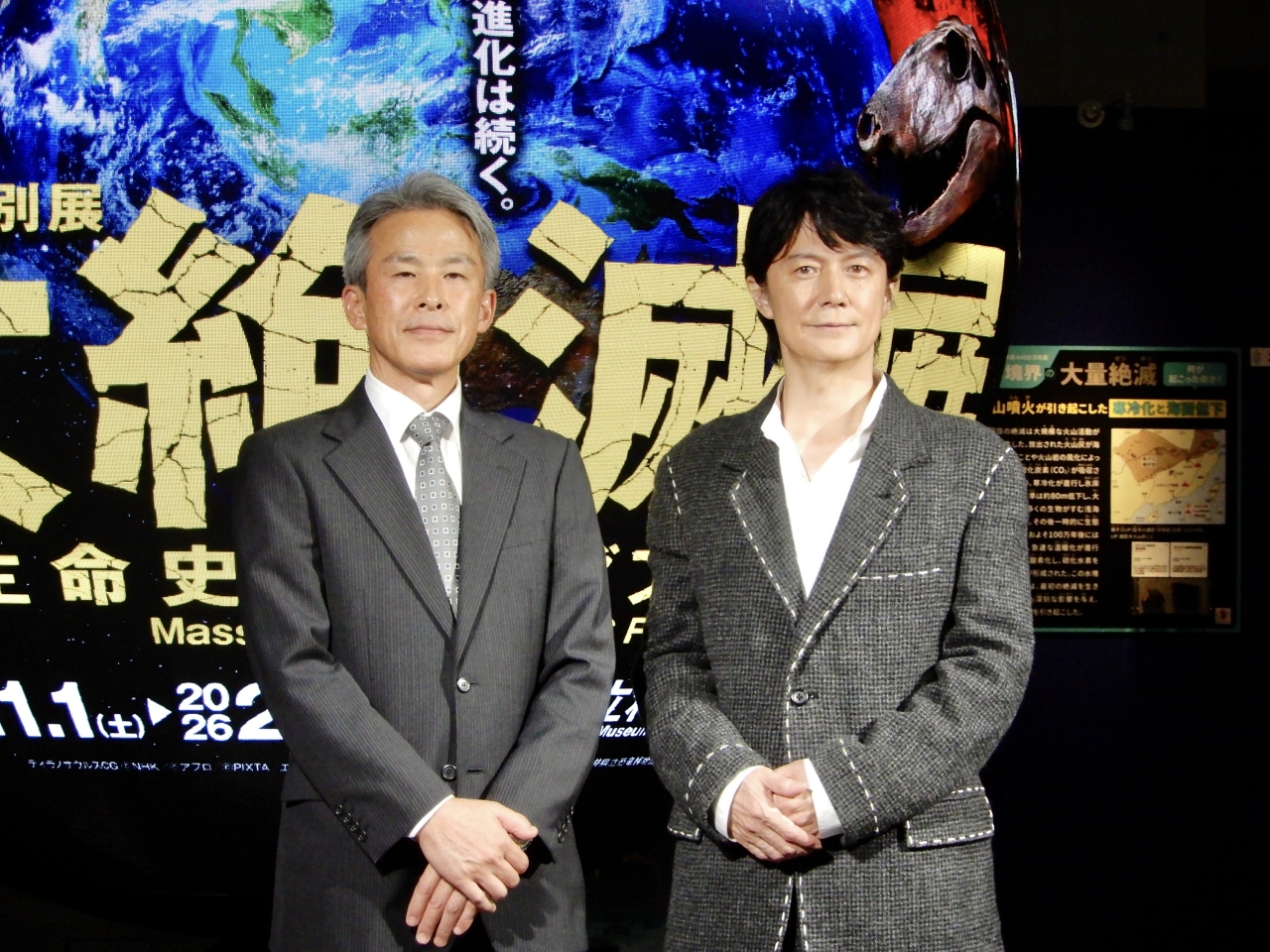
At the press conference held prior to the event, Masaharu Fukuyama, who will be the special navigator for this exhibition, took the stage.
Fukuyama served as the host for NHK’s nature documentary program “Hot Spot: The Last Paradise,” and for 15 years has traveled around the world, pursuing the amazing ecology and evolutionary mysteries of endangered wild animals. In the second venue, a special exhibition of 27 photographs of animals taken by Fukuyama is being held, along with the statement “Voice of Life, Song of the Earth.”

Fukuyama says that the origin of her creative work was her grandmother, who continued to face nature through farming while raising four children on her own. “From an early age, I’ve thought of nature as something incredibly beautiful that lies far away, but also as a very difficult place to live in. So when I received the offer to appear in a nature program, rather than wanting to go and see something beautiful, I was interested in what was happening to the nature that our family had lived in and been allowed to live in,” she explains of her thoughts on the program.
Fukuyama also said that through this exhibition, he felt that crustal movements and volcanic activity were occurring as part of the “metabolism” of the Earth when viewed as a single living organism. “When a mass extinction occurs, 70%, and in some cases 90%, of all living organisms become extinct. Was this a sacrifice made so that the Earth could grow and evolve? If we think of the surviving organisms as being essential to the Earth… If that’s the case, then if we consider the present to be the ‘sixth extinction,’ what exactly are we doing for the Earth as a living organism? Perhaps we too will become sacrifices to the Earth’s growth and change,” he said, reflecting on the many thoughts that have been swirling around in his mind.

Finally, he gave the following message to the children who will be visiting the exhibition:
“After seeing the exhibits, I felt that we cannot survive without both what is given to us (such as our surroundings and luck) and what we work hard to grasp for ourselves. Some people may wonder why they have to study and why they have to go to school. However, I hope that people will realize that, in a world where there is poverty, discrimination, division and disconnection, we are extremely blessed to be able to go to school for compulsory education and to have an environment where we can learn. Even if the Great Extinction exhibit makes you feel scared, I hope that it will make you think about what you can do to survive with your beloved family and friends, and that you need to do your best.”
Overview of the special exhibition “The Great Extinction: The Big Five in the History of Life”
| Dates | Saturday, November 1, 2025 – Monday, February 23, 2026 (Holiday) |
| venue | National Museum of Nature and Science (Ueno Park, Tokyo) |
| Opening hours | 9:00-17:00 ( entry until 16:30) |
| Closed days | Mondays, November 4th (Tue), November 25th (Tue), December 28th (Sun) – January 1st, 2026 (Thu), January 13th (Tue) *However, the museum will be open on November 3rd (Monday, national holiday), November 24th (Monday, closed), January 12th (Monday, national holiday), February 16th (Monday), and February 23rd (Monday, national holiday). |
| Admission fee | Adults and university students: 2,300 yen; elementary, junior high and high school students: 600 yen
*Free for preschool children. |
| Organizer | National Museum of Nature and Science, NHK, NHK Promotion, Yomiuri Shimbun |
| inquiry | 050-5541-8600 (Hello Dial) |
| Official exhibition website | https://daizetsumetsu.jp/ |
*The content of this article is current as of the date of coverage. Please check the official exhibition website for the latest information.

